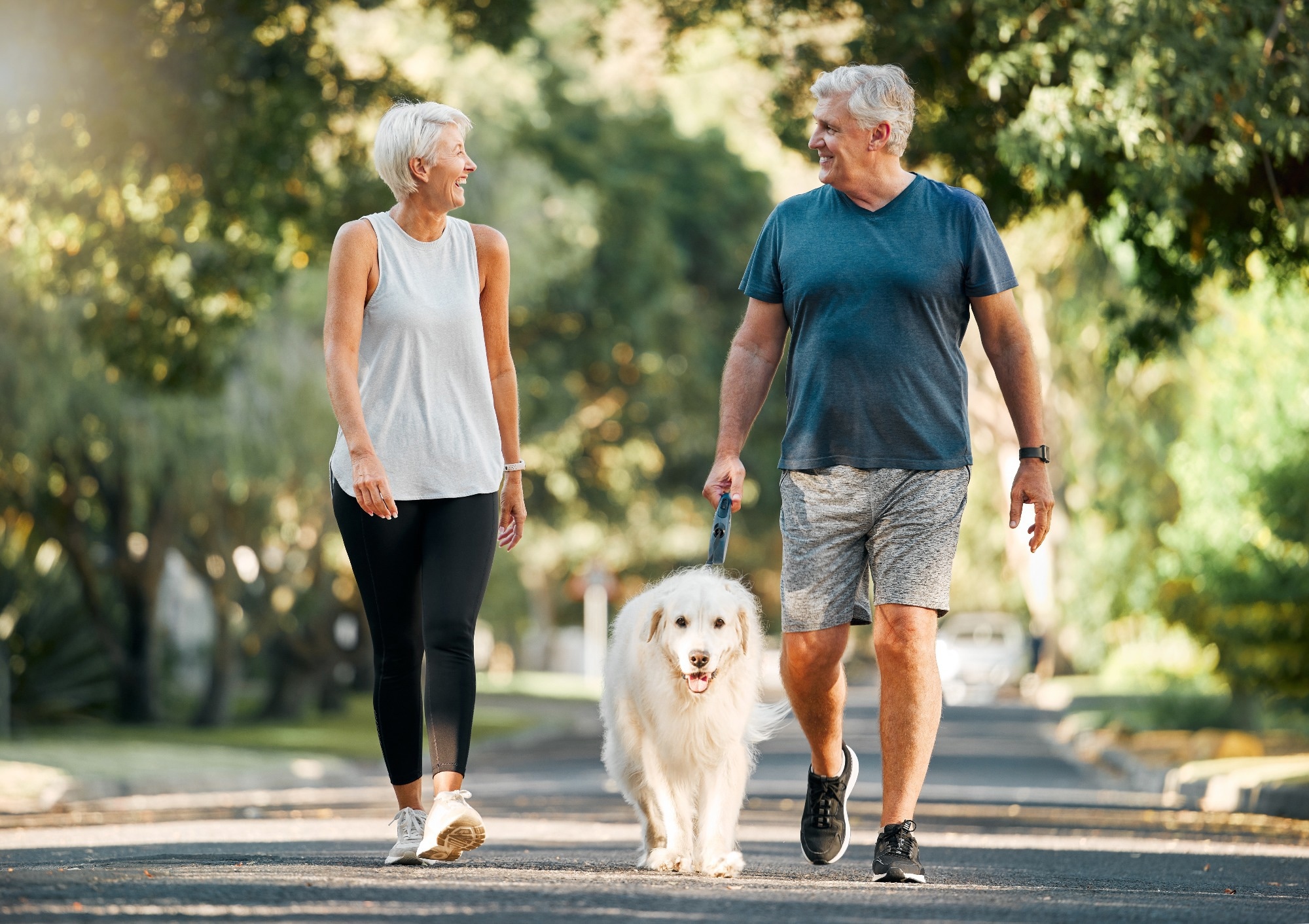In a recent study published in BMC Public Health, researchers investigated the impact of the human-dog bond on physical activity (PA), lifestyle, and health outcomes in dog owners (DO).
 Study: Walk or be walked by the dog? The attachment role. Image Credit: PeopleImages.com - Yuri A/Shutterstock.com
Study: Walk or be walked by the dog? The attachment role. Image Credit: PeopleImages.com - Yuri A/Shutterstock.com
Background
A healthy lifestyle, which includes a balanced diet, frequent physical activity, and abstaining from tobacco and moderate alcohol intake, can help prevent and manage chronic diseases.
Researchers have addressed global health issues through community-based walking clubs, public legislation, and pet engagement. Attachment level, dog-walking views, and caregiving practices impact the health advantages of pet ownership.
About the study
In the current study, researchers investigated whether DO's connection to their dogs impacted overall PA, as evaluated by accelerometry. They also examined associations between social, demographic, and lifestyle factors and the health of DOs and their pets.
The researchers analyzed 38 dog owners and their canines. In the initial phase, they collected samples via snowball and convenience sampling. They recruited participants orally and through social media and approached dog owners while strolling in parks and public streets.
After recruiting volunteers, they conducted an in-person meeting to describe the study, excluding dogs and their owners with chronic musculoskeletal conditions or disorders that might interfere with physical activity and dog owners who did not have daily interactions with their dogs.
Each participant (dog and owner) received a distinct numerical identification code in the second study phase. After filling out a web-based questionnaire, the participants could enter the third study phase to use accelerometry to assess their and their pets’ physical activity levels during routine activities.
The researchers assessed socio-demographics [age, gender, level of education, body mass index (BMI), employment status, and family members], self-rated health (SRH), the Lexington Attachment Pet Scale (LAPS), and the FANTASTICO Lifestyle Assessment Scale data.
The team collected socio-demographic information about the dogs, including age, gender, adoption date, and canine care procedures (such as sterilization, deworming, and vaccination).
They used a subjective approach to assess the dog's body condition while in contact with the study participants and their pets, considering visual and palpable features, including the Body Condition Score (BCS). They used descriptive statistical information and Spearman correlation analysis to investigate associations between PA levels, LAPS, social and demographic factors, SRH, and lifestyle behaviors.
Results
The mean participant age was 43 years, and 66% were female. Most participants lived with multiple individuals; 61% had normal-range weight, 61% had a bachelor's degree, and 70% worked in the tertiary sector (70%).
Thirteen percent of dogs were ≤2 years of age, 6.0% were three to eight years, and 21% were ≥9.0 years.
The study found significant correlations between dog owners' light-level physical activity and their pets' vigorous physical activity. The relevance of pet health and LAPS subscales, closeness, and attachment were associated with taking the pets for walks.
DOs who lived a healthy lifestyle reported improved SRH scores and were more concerned about the health of their pets. Employed owners had a considerably greater daily number of metabolic equivalents (METs), step counts, moderate physical activity (MPA), and moderate to vigorous physical activity (MVPA) levels than unemployed owners.
The frequency of dog walks varied significantly based on the work position of the owners. Education levels also demonstrated a somewhat significant association with the value people placed on their dog's health.
Dogs with a higher BMI had a strong relationship with the frequency of owners taking their dogs for walks, whereas sedentary activity had a marginally significant negative link.
The significance of a dog's health was significantly related to the FANTASTICO lifestyle scale, with higher scores in the Personality/Work subscale and better Other Behaviours subscales indicating a moderately significant association with lower BMI values for their pets.
Conclusion
This research underscores the link between adopting healthier habits and an increased self-perception of health, alongside a heightened attention to the health of one's pets.
It points out that the bond between dog owners and their dogs plays a crucial role in fostering healthy lifestyle choices and active participation in physical activity (PA).
The findings suggest that dog owners engage in more physical activity when they share a strong connection with their pets, indicating that the strength of the human-animal bond significantly influences their levels of physical activity.